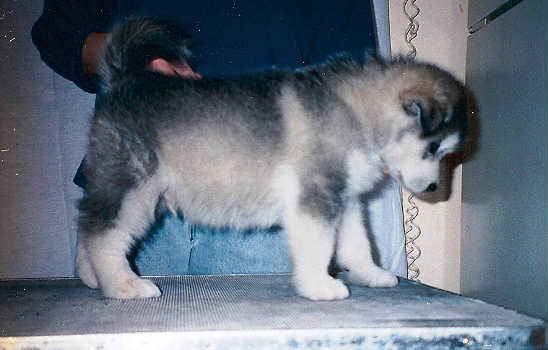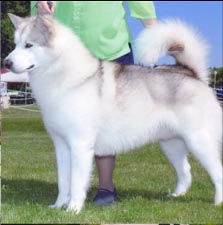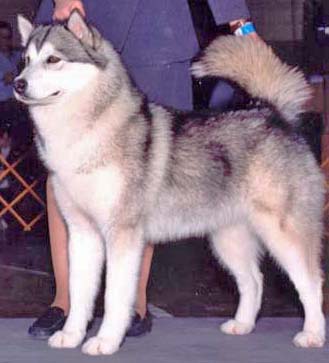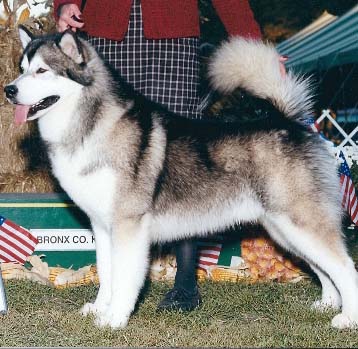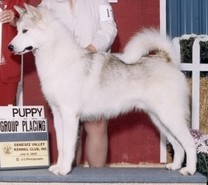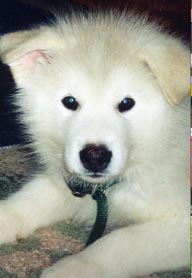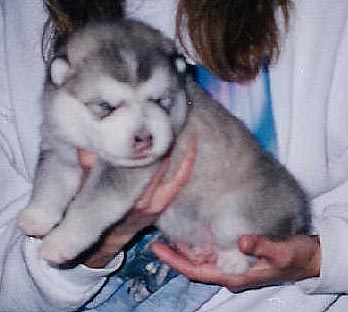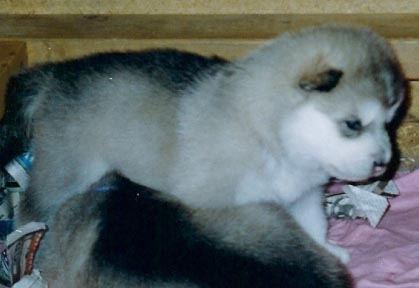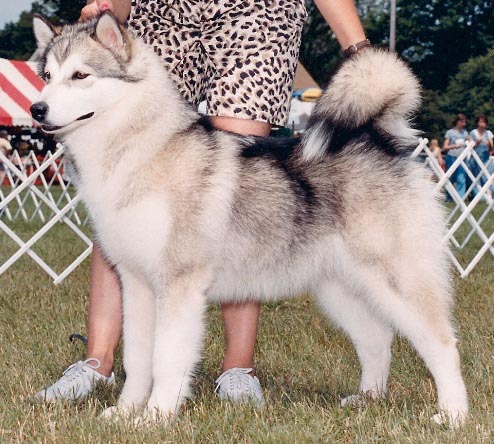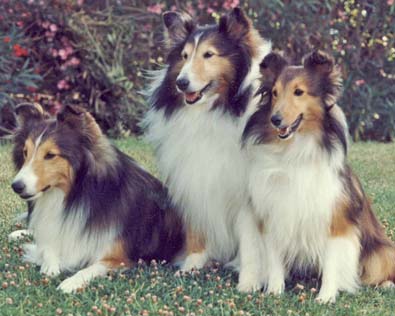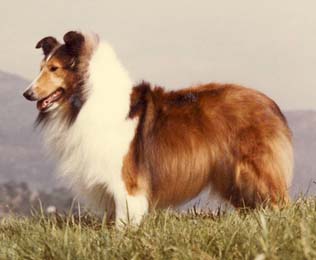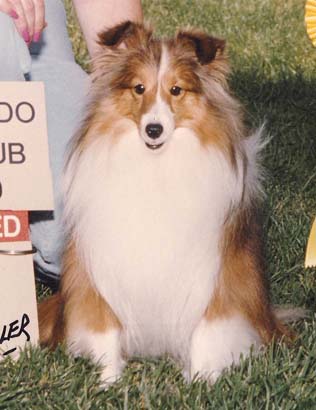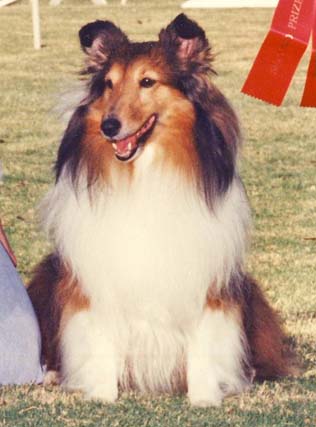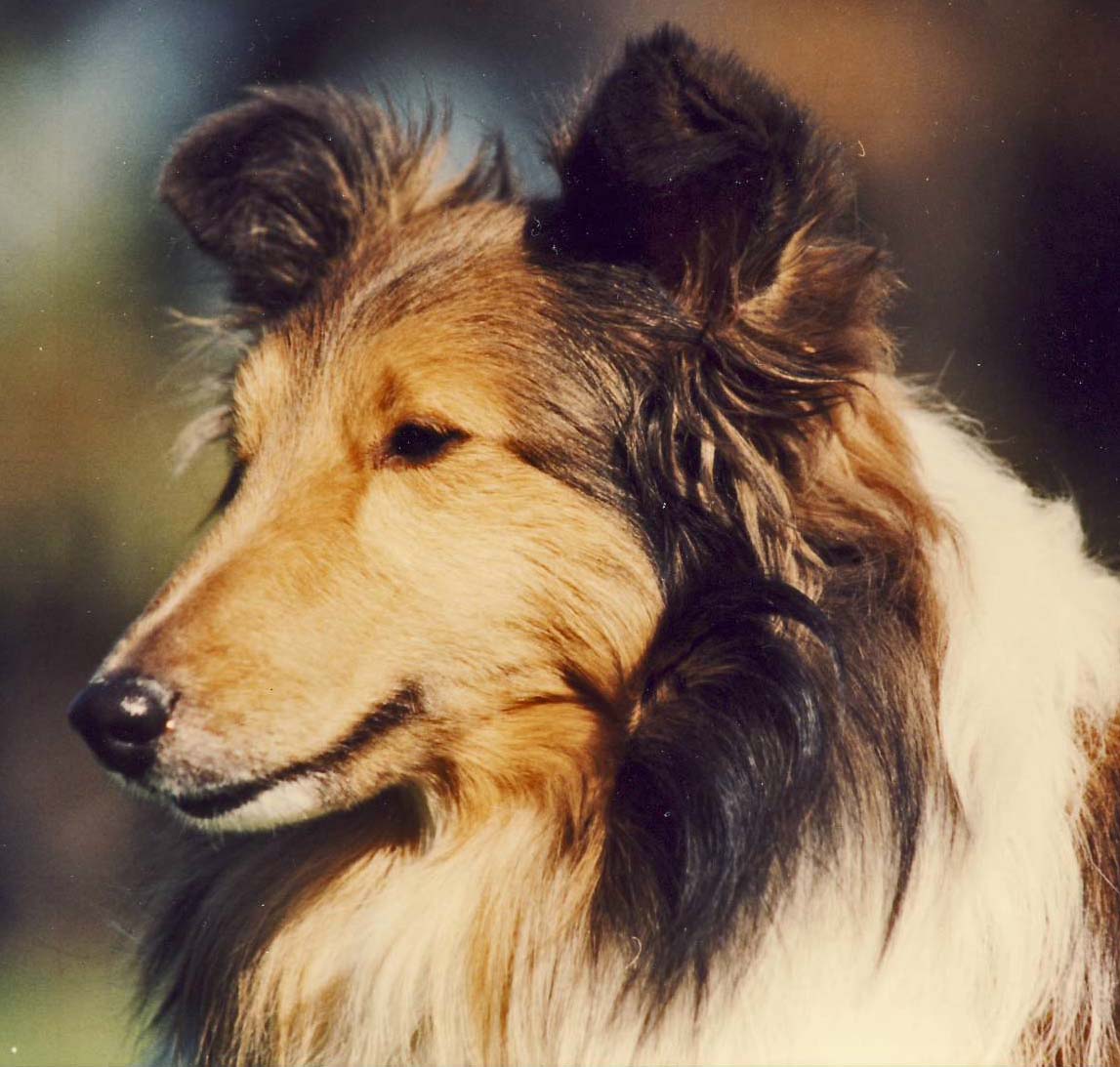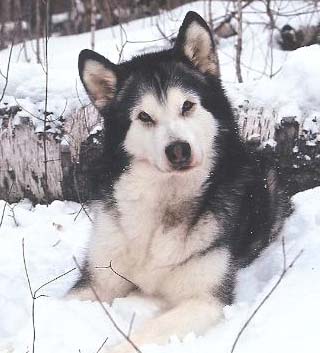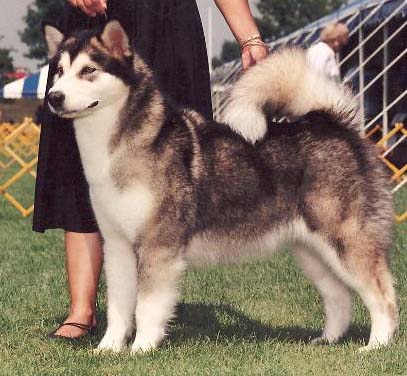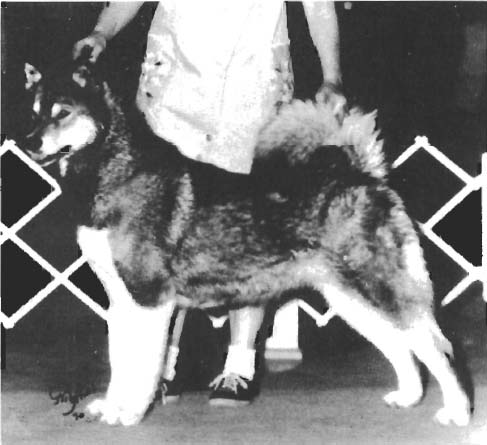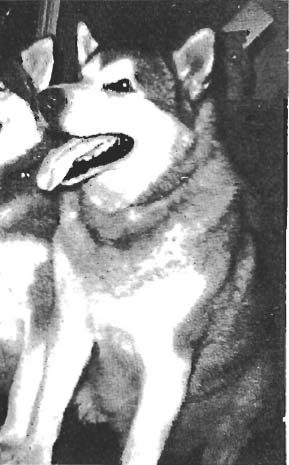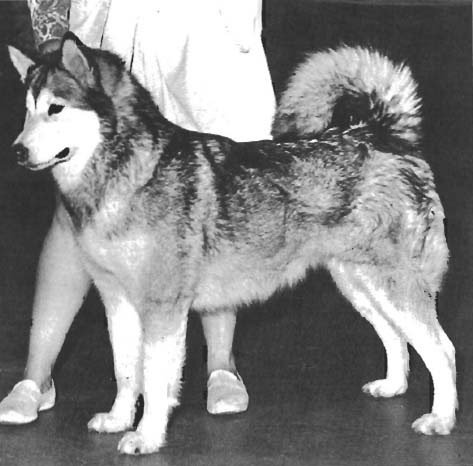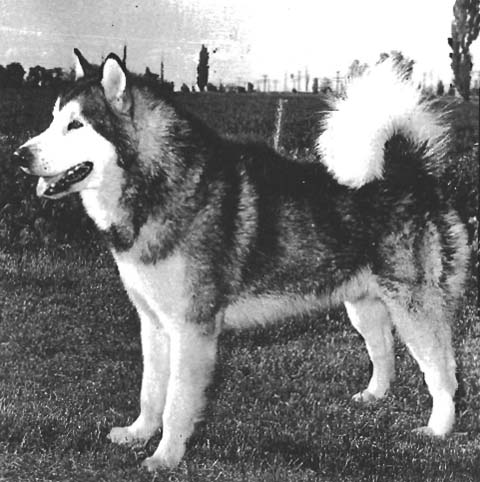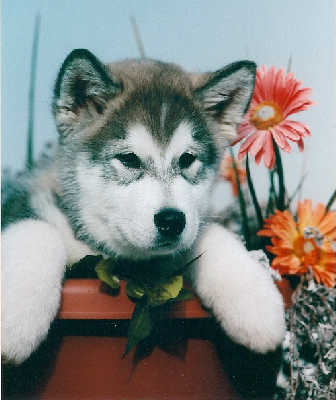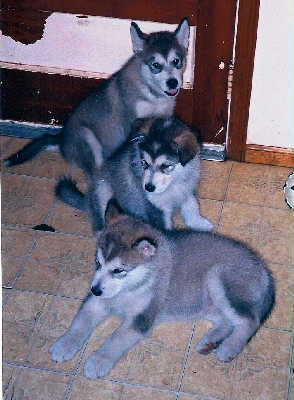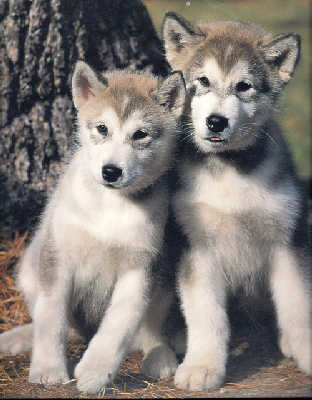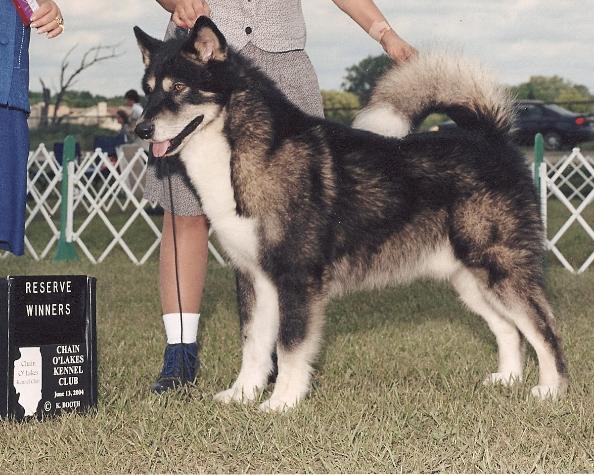When Gray isn’t Gray!
Silver (genetically Fawn) in the Alaskan Malamute
When I originally put together the Malamute coat color website, it was based on what was known, accepted, and/or theorized at that time in canine coat color genetics specific to the Alaskan Malamute. In the vast majority of cases this fit exactly with what we saw in actual practice. There had always been a few isolated situations where numbers didn’t work out as expected – a situation primarily attributed to chance. In addition the color Silver proved to be a bit of a puzzle because, while dark silvers might just be a light variation on gray, light silver did have some characteristics which seemed to hold the possibility of being unique. While interesting to note, these issues never suggested any real reason to question the accepted coat color genetics in the breed. Please see the main coat color genetics site for detailed information on the coat color genetics discussed here.
Recently, however, several specific cases came up that presented a real puzzle because they were not possible to explain based on accepted knowledge of coat color genetics in Malamutes. In researching dogs she was interested in utilizing for her breeding program, Karin Fisher came across several curious scenarios.
Karin’s story
In my search for a dog to breed my girl to, I came across a dog that I liked very much with beautiful movement and structure - Wintuk's Gentleman in Black - 'J'. J is also rather unusually colored - I was told he was a true black and white (though he is actually a dark Agouti). My understanding when this all started a couple of years back was that the difference between a true black and white and a seal was that the black and white would have dark undercoat, but the seal would have lighter undercoat. But I really didn't understand the mechanics of the mode of inheritance. I contacted Nichole as I knew she had done some work with malamute coat color, and asked her what I could expect as far as coloring of the pups if I bred my girl to J. Thus started a very long and patient education from Nichole. In a very simplified version, I learned that all malamutes were thought to be basically different versions of Agouti (gray) or Tan Point (seal). I learned the influence that the Domino gene has on these colors. Dogs without the Domino gene would show more color and thus you would see what is commonly referred to as 'Agouti' which is gray without the Domino gene, and true black and white, which is seal without the Domino gene. I learned that most malamutes have two copies of the Domino gene which suppresses color, thus the clean open faces and sharp distinctive markings in seals. I also learned that Domino is recessive, but through selection of 'clean faces', we are seeing fewer and fewer agouti and tan point dogs in the breed. If you look at old pictures of malamutes from years back, you see what appear to be quite a few non-Domino dogs.
Nichole and I talked some more about other potential colors that may be produced in the litter, and in doing so Nichole took a closer look at J's parents. Nichole commented that both of J's parents looked like gray and whites and asked what color J's dam Ariel was when she was born. While it is not uncommon for an agouti to very closely resemble a gray and white, one of the true 'tests' of whether a dog is Agouti is they are born as mud faced pups with very little if any white on their faces. Though agouti dog's faces tend to lighten up some as they age, most maintain distinctive markings around the eyes, and dark pigment throughout their lives. I checked with Sharon Kalous (Wintuk Kennels, breeder of J) to see what color Ariel was at birth and she said she had very dark goggles, but still had for the most part a white face. If both Drake and Ariel were in fact gray and white mals, as they appeared to be, to produce J was genetically impossible. It would be like two blue eyed parents producing a brown eyed child. We could guess that it was an odd mutation that affected nothing but his coloring. But in J's litter of 7, he also happened to have a litter brother colored just like him. So not random mutation as chances of it happening with two pups were very slim. We also knew that there was no chance of the litter being sired by anyone other than Drake, so had a stumper on our hands.
I started researching pedigrees, looking at pictures of the dogs behind J and noticed that there was the occasional Agouti dog popping up, and other cases where you would expect to see Agouti, but they didn't occur. Timberlane's Glacier Penny being a prime example. Penny appears in J's pedigree 10 times.
Penny was a very obvious Agouti, and yet seemingly didn't produce any Agouti pups in her breeding to Glacier's Storm Kloud who was a gray and white open faced dog. While this is not unheard of, statistically, 50% of her pups should have been Agouti. Though some of her pups had color on their face, they were not born the typical mud faced that you should see with Agouti. We also started seeing a pattern of the surprise Agouti dogs with Silver or very light colored litter mates.
Interestingly enough, although there has been a lot of inconsistency in breeder registration of colors, Nancy Russell of Storm Kloud Kennels was very consistent in registering any pup with goggles, or a bit more color on their faces as seal, and those dogs without as gray and white. In this manner, Nancy may in fact have been pointing out those dogs that were actually Fawn, and it is a tradition that has been carried through with many dogs descended from her line.
I am constantly researching pedigrees, and in doing so, kept my eye out for other lines where the situation of Agouti or Tan Point dogs unexpectedly popping up out of gray and white parents occurs. I happened to contact Bonnie Martin (SnoCreek Kennels) with an unrelated question about her dogs. We started talking and I mentioned I noticed she had some Agouti mals, and asked on the off chance if she had any dogs she would consider Silver. She responded that yes she did, and graciously allowed her Phynx to be tested - who was the first dog to suggest Nichole's theory that the Fawn gene does in fact exist in malamutes.
The Anomalies
Over time Karin’s investigations produced enough isolated incidents of dogs who did not fit the accepted pattern of inheritance that it became clear something unexpected was happening. These anomalies showed enough of a pattern that it gave us a direction to go in for direct investigation.
The anomalies of specific interest included:
Non-domino pups (agouti and gray) being produced out of parents who appeared to be gray (Agouti + Domino). This should not be possible based on the previously accepted idea that only the Agouti and Tan Point loci occurred in the breed, and that Domino was recessive to non-Domino.
The color “Silver”. It had been noted that this color tended to occur in specific lines. While similar to the color Gray, Silver was notable for guardhairs with reduced black tipping and for a lack of masking on the face. The darkest variations resemble the lightest extreme seen in true Grays, however the lighter variations did bear some striking differences.
Light Silver and White. It has been noted that the palest versions of Silver occur in the same lines which also produce white.
The Theory
As a quick review, the gene which causes Agouti to become the color Gray, and Black and White to become the color Seal, is recessive. For this reason, all Agouti or Black and White pups should have at least one Agouti or Black and White parent. In the overwhelming number of cases this is exactly the pattern that is seen.
When faced with a tiny number of cases where Agouti or Black and White puppies were produced by seemingly Domino (Gray or Silver) parents, we initially investigated the easiest alternatives. First, we looked at the possibility that one parent actually might be Agouti rather than Gray. Through pictures and direct observation of dogs when available, we confirmed that there was no evidence of a non-Domino phenotype (appearance). Where possible we looked further back into pedigrees and again were not able to confirm Agouti or Black and White immediate ancestors. We also looked into the possibility of alternative sires to the given litters and concluded that would be an extremely unlikely scenario.
This left us exploring the next most likely possibility. There is a coat color gene on the Agouti locus that is known to “hide” Agouti and Tan Point. This gene is dominant to Agouti and Tan Point, is called Dominant Yellow or “Fawn”, and is responsible for the pattern of color seen on sable Shelties and Collies. Traditional thought has always been that this gene does not occur in Malamutes.
Taking a picture of a Sable Collie or Sheltie and removing the phaeomelanin (red/yellow) pigment would theoretically result in a dog with coloring not unlike that seen on many lighter gray or silver malamutes. Black pigment would occur on the tips of the hair covering the back, sides, and head of the dog, leaving a white undercoat as well as white legs and face with a “widow’s peak” of dark tipped hair on the forehead. The amount of black can vary from very little to extensive.
Of the few confirmed cases of Agouti or Tan Point pups being produced out of parents who appeared gray, it was notable that each one involved lines with a history of producing open faced gray dogs on the very light end of the scale. It is also significant that these same lines are also known for producing the color Silver. It was our theory that these dogs were not true grays, but were instead Fawn (genetically Ay).
The Investigation
At the time of writing there is no DNA test for the Agouti or Tan Point alleles on the Agouti Locus. Thankfully for our investigation there is a test for Fawn (Ay). While we could not test for Agouti or Tan point, this test would allow us to check for the presence of Fawn in dogs who were likely candidates. With many thanks to their owners for allowing us to investigate, we sent samples from three dogs to DDC Veterinary (www.vetdnacenter.com) for analysis.
The results came back as follows:
This suggests that Ay (fawn) is present in our breed, and is responsible for Silver Malamutes as well as for some dogs on the darker end of the Silver scale who some may consider lightly colored open faced grays.
It must be noted, however, that this test was repeated at another lab. Their results do not confirm Ay. We can not, therefore, state with certainty that this gene occurs in our breed. It remains a viable theory.
The Conclusion
Our results suggest that Fawn (Ay) may occur in this breed, and if it does initial investigations suggest that it produces a distinctive coat color variation which differs from the similar coat color known as gray. At this point our sample size is very small, and labs are giving us conflicting test results, so there are a number of factors which will need to be investigated further.
More information is needed and I would appreciate feedback from anyone who tests their dog for this gene.
We can not establish the full parameters of the range in color seen in Silver dogs based on this small sample, though looking at tested dogs as puppies and as adults does provide valuable insight. In general Silver puppies are either a very pale buff color or appear to be a lighter version of gray with a minimal black stripe down their back and little or no black tipping on their body coat. They often have larger than average white “eyebrows”, no “bar” visible in their facial marking, but may have eye shadow around their eyes. As adults these dogs appear to be white “frosted” with gray tipping on their back, sides, and head. Most often they are open faced, but sometimes have light eye shadow.
Examples
